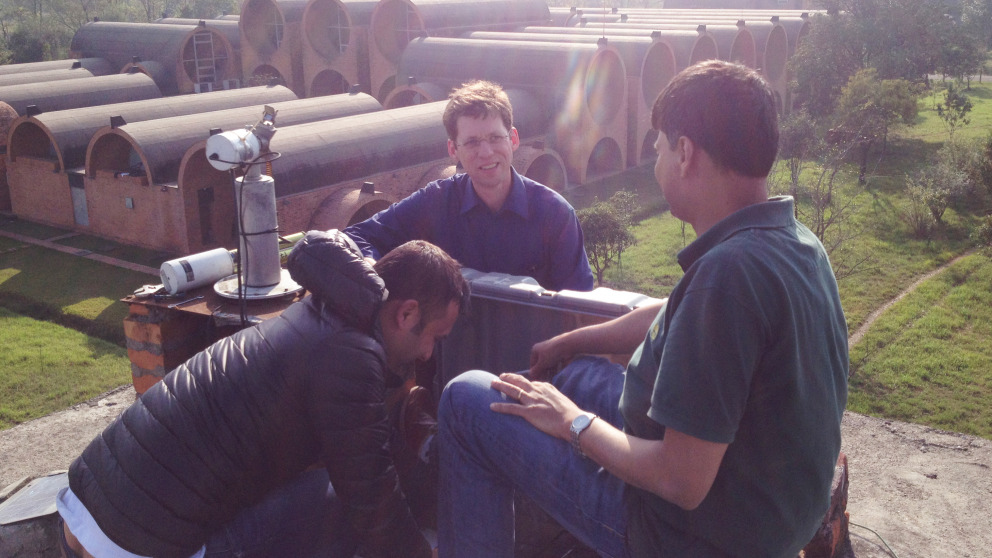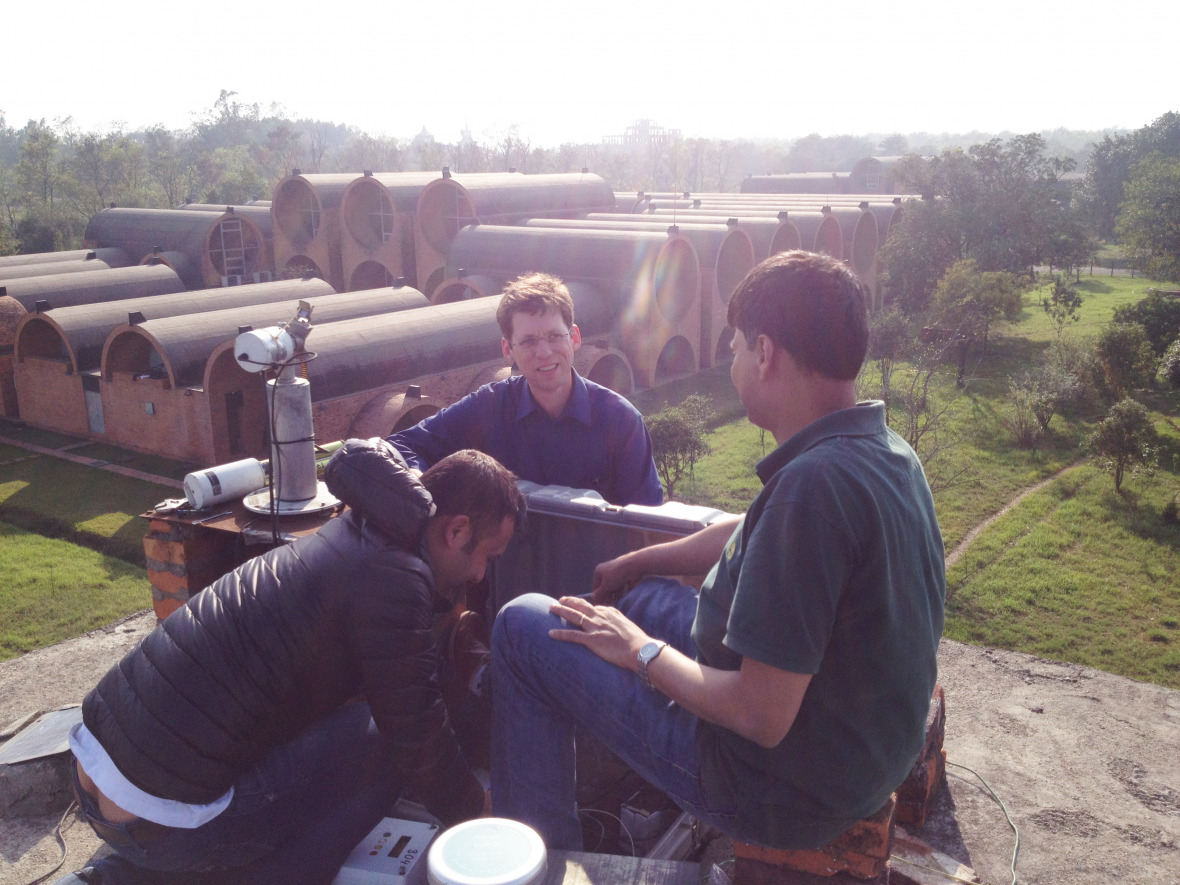Headline:
Rebuilding Nepal: IASS Supports Cleaner Brick Production for Better Air Quality
SLCPs

South Asia stands out globally as a region that not only suffers from high exposure to air pollution, but is also extremely vulnerable to climate change and very poorly prepared to deal with its consequences. South Asia’s general lack of resilience to environmental problems was recently brought into focus by the major earthquakes in Nepal on 25 April and 12 May 2015, which led to nearly 9 000 deaths and extensive damage to buildings and infrastructure. With the Climate and Clean Air Coalition (CCAC), the IASS is actively contributing to the reconstruction effort on the ground. The institute has been a lead partner in the CCAC Brick Production Initiative since the autumn of 2014 and has just been appointed a lead partner in the CCAC Regional Assessment Initiative.

Bricks, the main building material in Nepal, are in high demand for the post-earthquake reconstruction work. At the same time, nearly all of the brick kilns in the Kathmandu Valley were destroyed or significantly damaged by the earthquake. These brick kilns have historically been a large source of pollution from black carbon (the main component of soot), visible as black plumes emanating from the kilns’ smoke stacks. Work is under way to ensure that, to the greatest extent possible, new brick kilns will be designed and built to produce higher quality, more earthquake-safe bricks in a less polluting and more energy efficient manner than their predecessors. These actions will hopefully lead to a reduction of harmful short-lived climate-forcing pollutants (SLCPs), in particular black carbon, in the Kathmandu Valley.
Promoting fast action on SLCP mitigation is the central goal of the CCAC, whose creation was motivated by a 2011 report that detailed a number of already available, cost-effective measures to reduce SLCPs. These measures, if applied globally, could avoid 2.5 million premature deaths, reduce crop losses by 52 million metric tonnes every year from 2030 onwards, and avoid 0.5 ˚C of global warming by 2050. Recognising that Asia’s high levels of pollution and its vulnerability to climate change make it a particularly important region for taking action on SLCPs, the CCAC Regional Assessment Initiative has launched a new Asian Regional SLCP Assessment, which the IASS will co-lead as a new lead partner of the initiative. The Asian Regional SLCP Assessment aims to provide deeper insights into how to tackle SLCPs as part of a more integrated approach to air quality and climate change policy in Asia, including the identification of the SLCP mitigation measures most relevant for Asia. The post-earthquake reconstruction efforts by the CCAC Brick Production Initiative are just one example of a case study that can inform the Asian Regional SLCP Assessment, which ultimately aims to identify priority measures for SLCP reduction that have the largest health, climate and development benefits at both regional and national levels.
As a leader of the Asian Regional SLCP Assessment, the IASS will provide project oversight and contribute scientific as well as regional expertise. IASS Scientific Director Mark Lawrence and Team Leader Maheswar Rupakheti have been involved with SLCP science for nearly a decade, notably in Asia, and the IASS is already actively engaged with air pollution issues in Asia through its projects Sustainable Atmosphere for the Kathmandu Valley (SusKat), BERLiKUM, and ELIAS. The IASS will further facilitate coordination and cooperation with relevant actors through its network of key regional stakeholders, including relevant ministries, scientific institutions, and think tanks. The IASS contribution to this assessment is led by Maheswar Rupakheti along with Birgit Lode, a member of the CCAC Steering Committee, and Kathleen Mar.
06.07.2015
